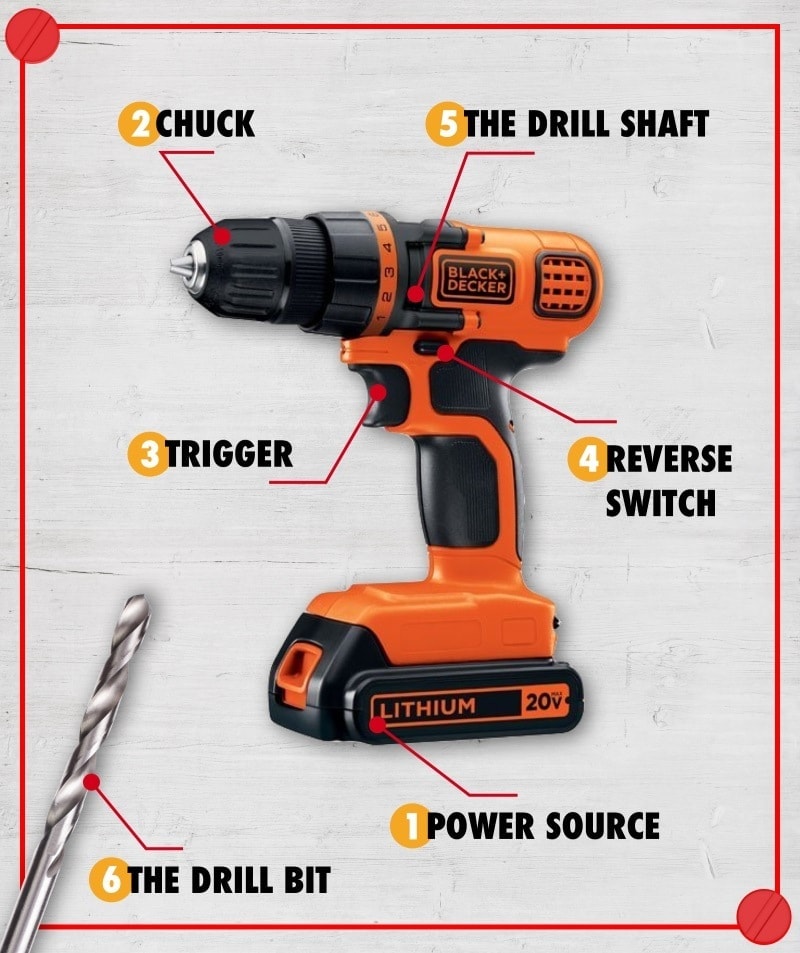Parts of a Drill (Explained with Pictures)
-
- Last updated:


The drill is an essential tool for every homeowner. You can use them for anything from hanging up a picture to redoing your home.
But, if you are new to the world of drills, they might be a little bit intimidating. That is why today we will be looking at all of the main parts of this versatile tool, and explaining what they do and how they are used. Read on!
The Parts of a Drill
1. Power Source
Naturally, every drill will have a power source. They might be powered either by a cord or battery pack. In either case, the power source will typically be located on the butt of the grip.
2. Chuck
The chuck is where you insert and fasten your drill bit. In days gone by, they used to require a tool called a “key” to secure the bit. You’ll still see chuck keys occasionally, but newer technology has come close to making them extinct. Contemporary chucks can usually receive bits without the help of any tool.
3. Trigger
The trigger is what will activate the drill. It’s located towards the top of the handle in a location similar to that on a toy gun. Some drills feature a variable speed trigger. This feature will allow you to control how fast the bit spins by how hard you squeeze it. It’s a great feature for tackling a wide range of projects, but simpler drills often won’t be capable of doing it.
4. Reverse Switch
Your drill will also feature a switch near the trigger that controls if the bit spins forward or in reverse. You will use the forward feature for drilling into a workpiece and the reverse switch for when you are extracting materials.
5. The Drill Shaft
The drill shaft is where the motor is located. It is also the region of the tool that serves as a bridge between the chuck and the trigger.
6. The Drill Bit
The drill bit is not technically a part of the drill, but the tool is pretty useless without them. Bits come in a wide range of shapes and sizes. They are fastened into the chuck to make holes.
There are drill bits made for various purposes, including drilling in metal, wood, plastic, and even bricks and concrete.
Conclusion
As you can see, the drill isn’t quite as intimidating as it might first appear. Though there are several components in this versatile tool, they are very easy to work with. Now that you have a rudimentary understanding of the drill and its parts, you should have no trouble using yours to complete a wide range of do-it-yourself projects around the house.
- See Also: How Much Does It Cost to Drill a Well?
- See Also: Milwaukee M18 Drill Review
- See Also: 8 Best Drill Guides
Contents

